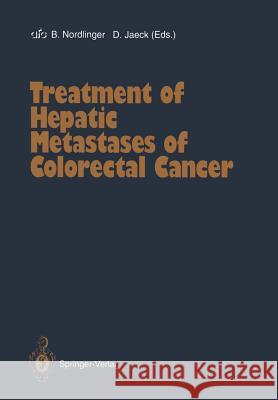Treatment of Hepatic Metastases of Colorectal Cancer » książka
Treatment of Hepatic Metastases of Colorectal Cancer
ISBN-13: 9783642518751 / Angielski / Miękka / 2012 / 166 str.
"The experience of each one of us is the treasure of all. " Gerard de Nerval In 1952, J. L. Lortat-Jacob 2] reported the first programmed right hepatectomy, which had been carried out for a hepatic metastasis of colorectal origin. Today, excisional surgery of the liver has become a routine procedure, with a low mortality and morbi dity. The varieties of excision have increased and been modified in accordance with the site and number of lesions to be treated. These advances notably stem from both the work on the segmental anatomy of the liver by Couinaud 1] and that of Ton That Tung 3], which have opened the way to a simplified and segmental method of hepa tic resection that is both safe and reliable. This progress has been greatly facilitated by a better knowledge of the effects of vascular clamping of the liver, and by the intro duction of new techniques including per-operative ultrasound, the ultrasonic dissector and the argon coagulator. Improvements in anresthesia have also contributed to the safety of these procedures. The high incidence of colorectal cancer (the second commonest cause of cancer death in France) and the frequent occurrence of hepatic metastases from this tumour, more than justify the search for an effective therapeutic management pro tocol. The important place of surgical resection, the technical advances outlined above, and the prospect of new treatment modalities using adjuvant therapy, are additional reasons for preparing a report on this subject."











